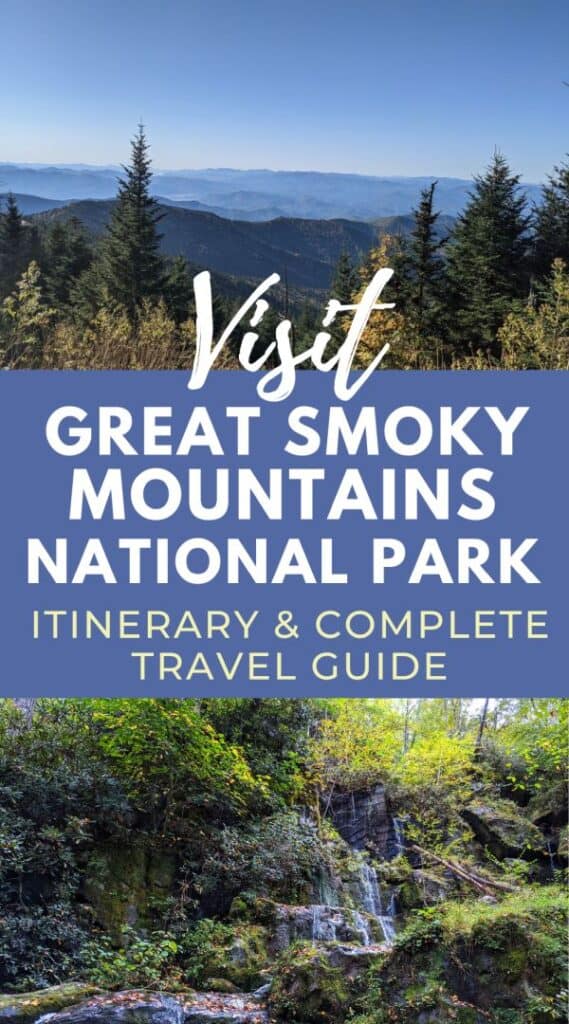Great Smoky Mountains National Park Itinerary for a Perfect Trip
If you’re looking for an epic adventure, look no further than the Smokies. This Great Smoky Mountains National Park itinerary and travel guide will help you make the most of your trip.
Great Smoky Mountains National Park is located in eastern Tennessee and western North Carolina, and it’s home to some of the most beautiful scenery in the United States. There are plenty of things to do in this park, so it’s the perfect destination for everything from a fun day trip to a romantic weekend getaway to a big vacation with the whole family.
In this article, I’ll cover important topics like the best time to visit, where to stay, what to see and do, and more.
Plan the perfect trip to the Smokies with this FREE printable travel planner.
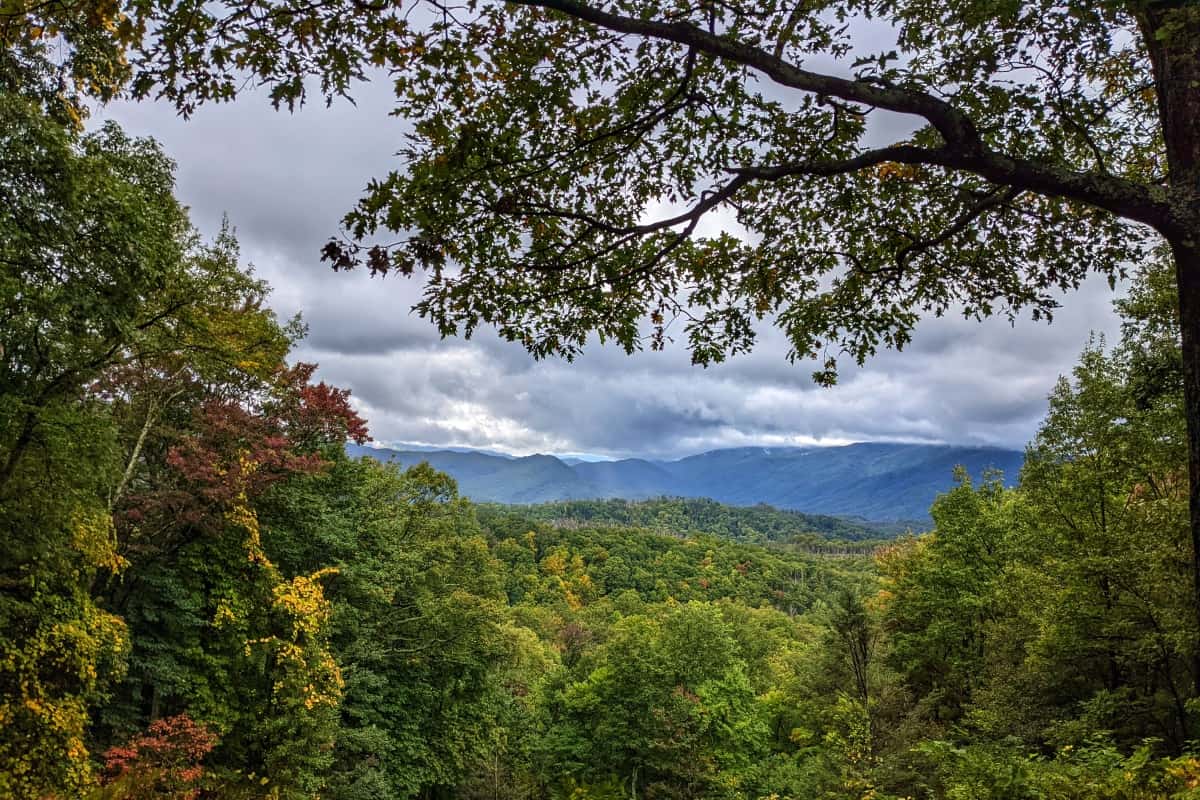
This post includes affiliate links. If you make a purchase through one of these links, I may earn a small commission at no additional cost to you. As an Amazon Associate, I earn from qualifying purchases. See disclaimer.
Great Smoky Mountains National Park facts
Here are some interesting facts about Great Smoky Mountains National Park to help you get to know the Park a little better before your trip.
- Entrance to Great Smoky Mountains National Park is free, and it’s open 24 hours a day all year round. (Effective March 1, 2023, parking tags are required to park in GSMNP for more than 15 minutes.)
- The Park covers more than 520,000 acres.
- The land area that the Park covers is split almost evenly between Tennessee and North Carolina.
- Great Smoky Mountains National Park is the most visited of all 63 U.S. National Parks…by quite a lot. More than 14 million guests visited GSMNP in 2021.
- The Park includes 10 campgrounds, not including backcountry camping options.
- Great Smoky Mountains National Park includes 384 miles of road.
- Clingmans Dome is the highest point in the Park at 6,643 feet. It’s also the highest point in Tennessee and the third-highest point east of the Mississippi River.
- Great Smoky Mountains National Park was designated a World Heritage Site in 1983.
Great Smoky Mountains National Park itinerary
Now for the good stuff. There are so many things to do in Great Smoky Mountains National Park that building an itinerary is a challenge.
My recommendation is that you plan to spend at least two full days in the Park, but more is certainly good as well.
Shake things up and make this itinerary your own. How you put these pieces together may largely depend upon where you are staying on your trip to the Smokies (and what entrance you’re using).
Be advised: drive times inside the Park can be quite long. There are essentially only a few major driving routes within the park.
Get a park map and get familiar with it and use it. Do not rely on GPS to get you around the park. It may steer you wrong. You can pick up a map at any visitor center.
TIP: Keep track of all the amazing sites you’re seeing in the park with this printable Great Smoky Mountains National Park bucket list.
On a quest to visit all 63 U.S. National Parks? Grab your own copy of the printable national parks tracker to check off your progress as you visit each park.
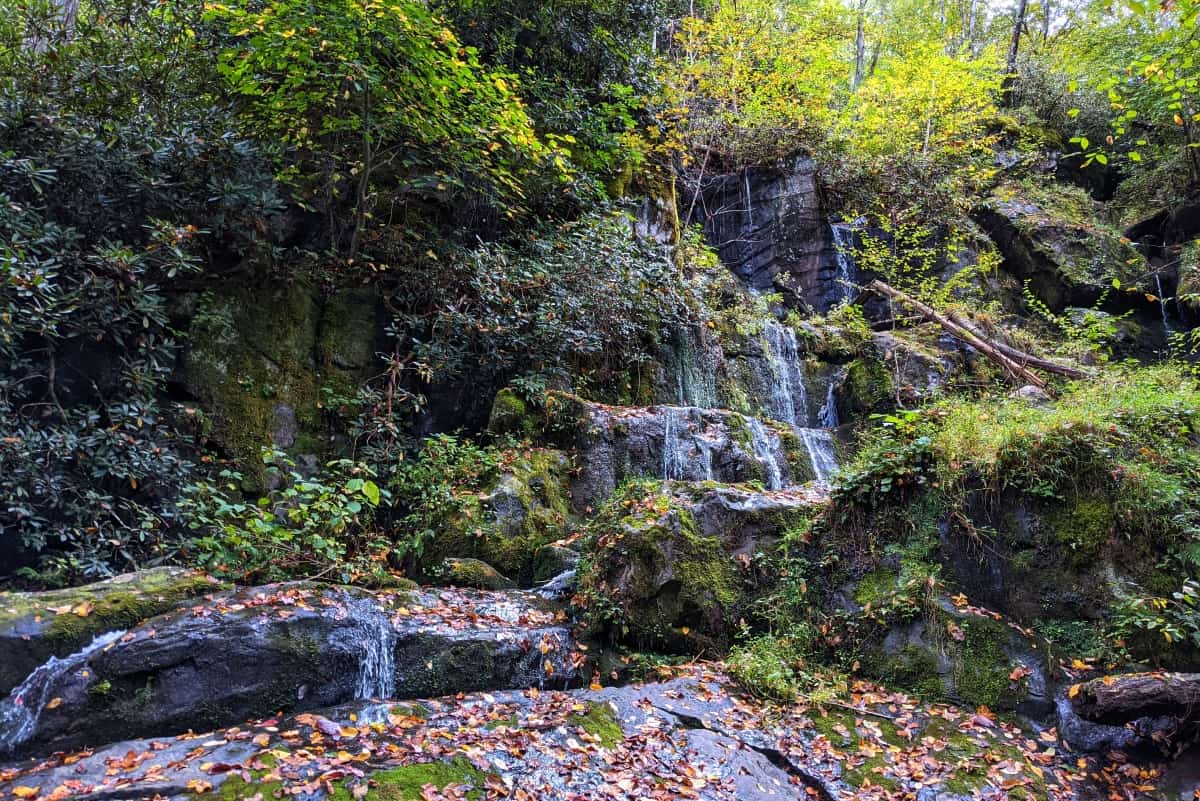
Visitor Center
Make your first stop at the Oconaluftee or Sugarlands Visitor Center to pick up a park map and any other information you need for your visit to Great Smoky Mountains National Park.
If you’re staying in Townsend, Tennessee, the closest Visitor Center to you will be in Cades Cove. I would recommend you start your itinerary with Cades Cove anyway if you’re staying in Townsend, so there you go.
If you don’t want to go to the Visitor Center you can download a park map from the National Park Service website.
Cades Cove
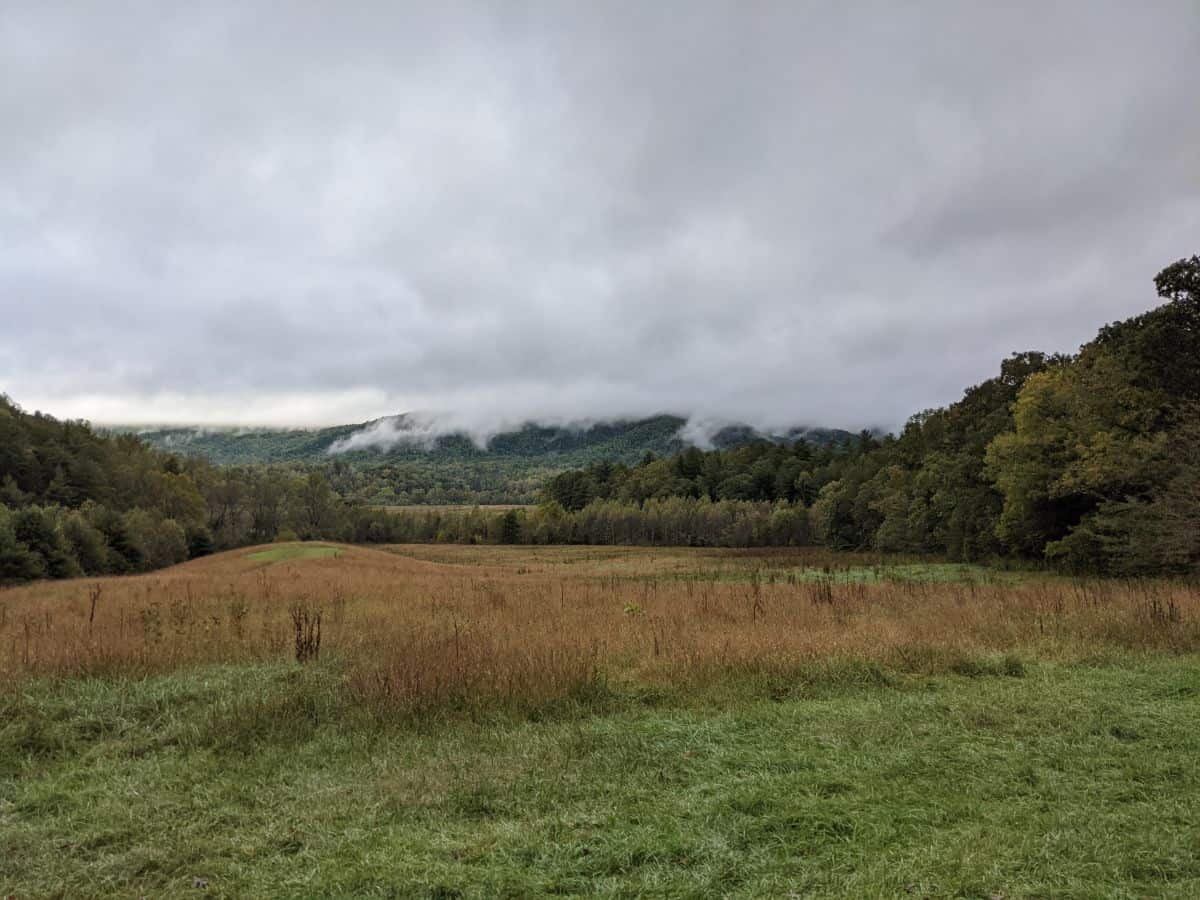
I recommend everyone start their trip to Great Smoky Mountain National Park with a drive through Cades Cove. It’s on the western side of the Park and it’s hugely popular. Plan to arrive at the entrance to the loop at the time it’s opening or even a few minutes before.
For a very nominal fee (it was $1 when we bought it) you can purchase a small booklet that will give you more information about Cades Cove and all of the stops on the scenic drive.
The Cades Cove Loop Road is a great place to see wildlife, so keep your eyes peeled for deer, bears, and other animals.
Let me stop here to say one thing. PLEASE DO NOT block the roadway so that you can get a better look at the black bears. It is unkind to back up traffic for 20 minutes so you can get your perfect photo. If there is not a safe place to pull over, keep moving.
Okay, rant over.
Plan to spend at least two hours driving through Cades Cove, longer if you’re there during peak travel times or a busy part of the day. I’d say it’s safest to plan to spend your entire morning there exploring.
Pack your patience. There may be times when the traffic is stopped or very slow because of road congestion.
There are so many things to see in Cades Cove and there are hikes in that area as well as one of the three Park Visitor Centers. Plenty to fill up at least your morning if not your full day.
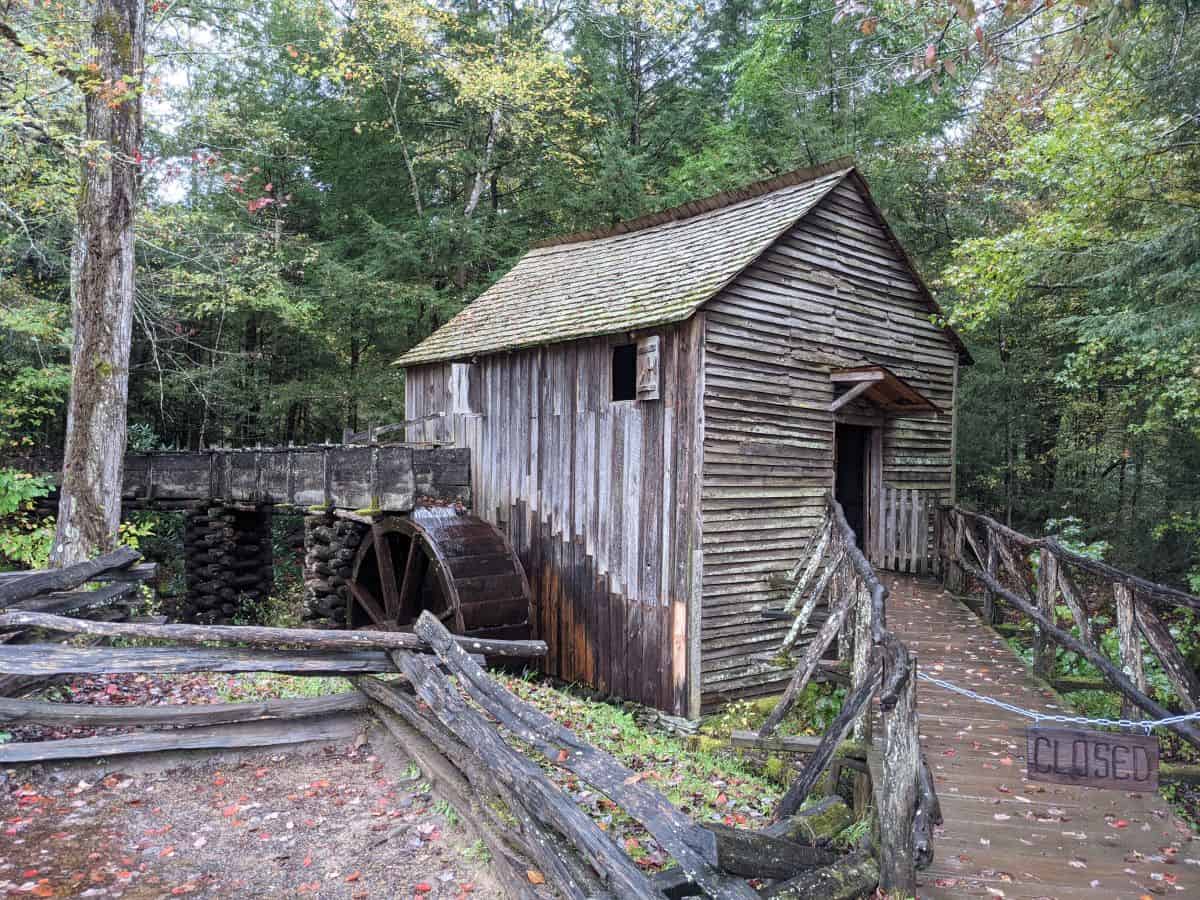
Laurel Falls Trail
The popular Laurel Fall Trail hike is a must-do in Great Smoky Mountains National Park. This trail can also get quite busy, so you might want to save this for first thing in the morning on your second day in the Park rather than right after Cades Cove.
Use your best judgment, and keep in mind that parking at the trailhead is quite limited.
Plan for this 2.6-mile roundtrip hike to take you about 2 hours. It’s considered moderate in difficulty.
Roaring Fork Motor Nature Trail
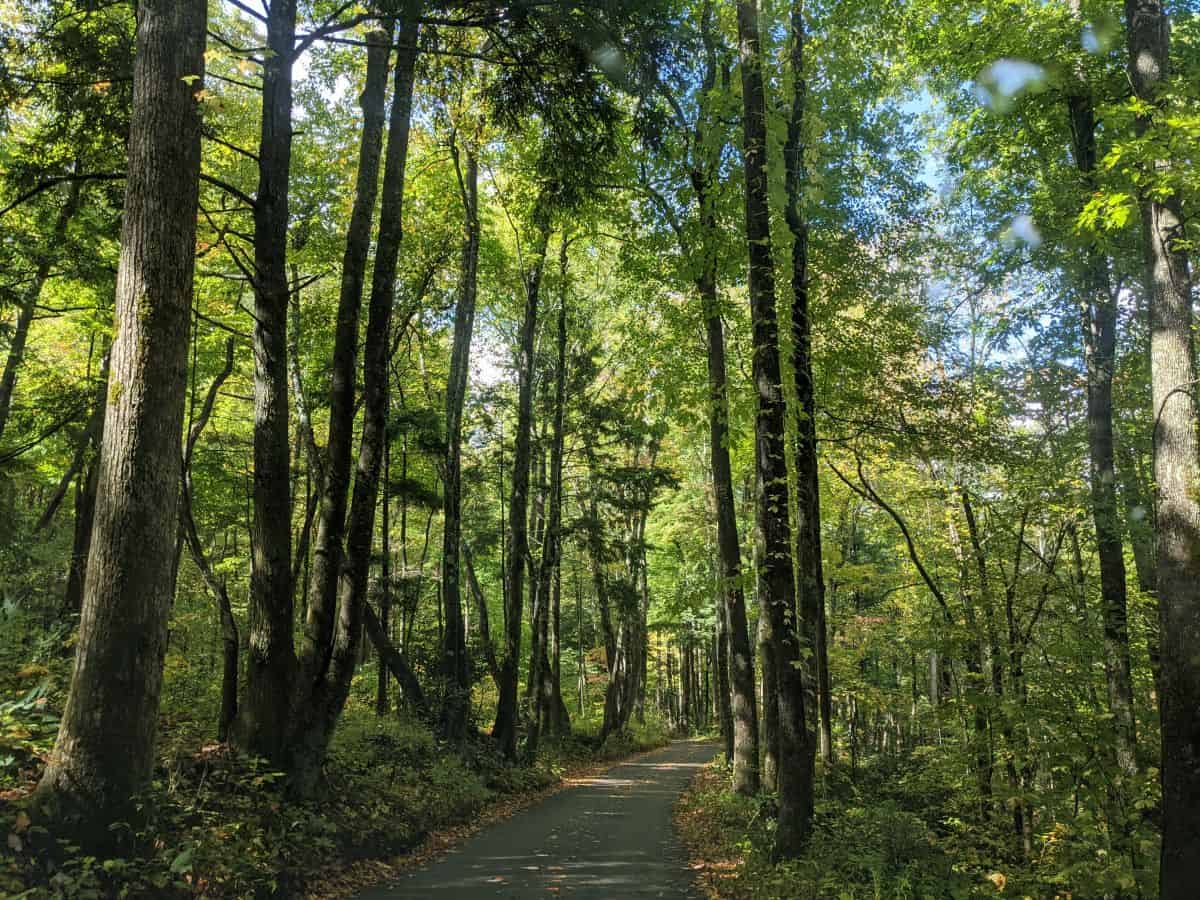
The other scenic drive in Great Smoky Mountains National Park is not to be missed. If you’re not much of a hiker, you can definitely do both Cades Cove and the Roaring Fork on the same day. Or do one scenic drive each of your two days in the Park.
The Roaring Fork Nature Motor Trail is on the east side of the Park near the Orchard Park entrance. In our experience, it wasn’t nearly as busy as Cades Cove.
The entire drive is about 5.5 miles on a one-way road. It does get a bit narrow at times so drive with care. This trail is a great way to see the park’s beautiful scenery. Please give it a try.
Newfound Gap
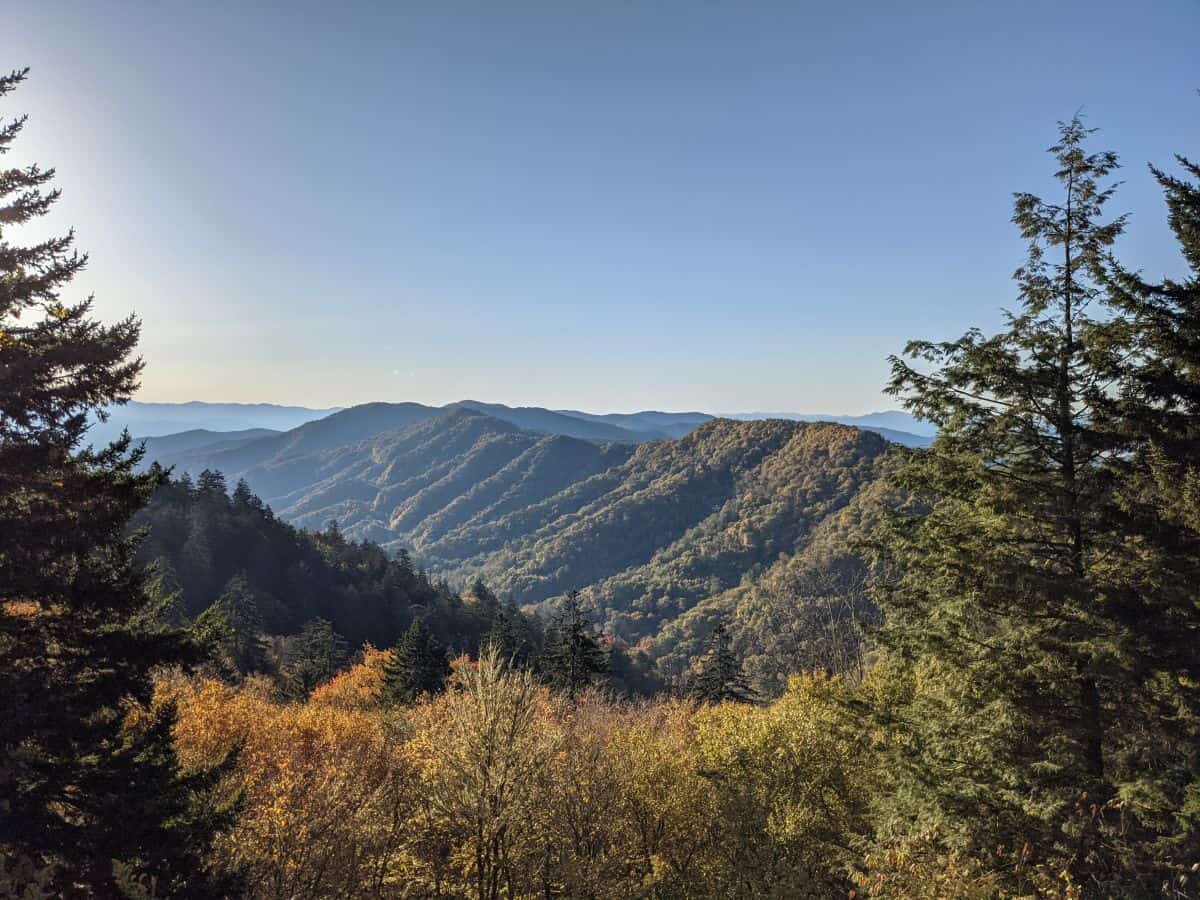
For beautiful views head to Newfound Gap…in fact, the entire drive along Newfound Gap Road from Cherokee to Gatlinburg (or the reverse) is just stunning.
There are several places to pull over and enjoy the amazing views along Newfound Gap Road. Take advantage, please. You won’t be sorry.
You’ll climb (in your car) about 3,000 feet. Please note that the temperatures at Newfound Gap will likely be quite a bit cooler than the surrounding lowlands.
The Appalachian Trail crosses Newfound Gap Road, so if you feel like stretching your legs and giving it a try go ahead. Then you can tell everyone you hiked the Appalachian Trail.
Clingmans Dome
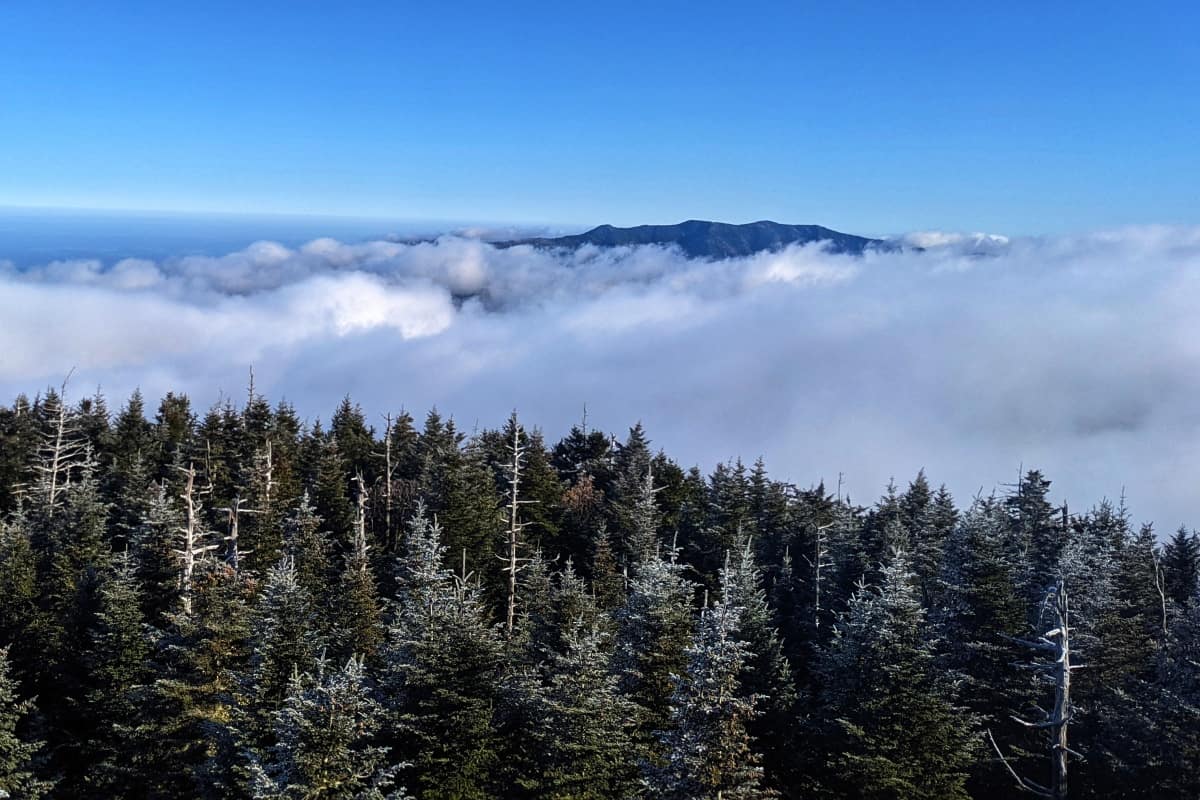
Just south of Newfound Gap, you’ll find the turnoff from Newfound Gap Road to Clingmans Dome Road.
This 7-mile road will take you up to the parking area just about half a mile from the top of Clingmans Dome (6,643 feet), which is the highest point in the Park. The road is closed to vehicles generally from Dec. 1 through March 31.
There’s plenty of parking up there, vault toilets, and a gift shop/visitor information center.
The half-mile hike up to the top of Clingmans Dome is paved and quite steep. Please wear appropriate footwear.
There’s also an observation tower at the top of Clingmans Dome that offers stunning views of the surrounding mountains and forests. It is said that on a clear day, you can see 100 miles.
Even if you aren’t sure you want to do the hike, the view from the parking lot is still quite wonderful and worth the drive.
Please note that it can get COLD up there. SIGNIFICANTLY colder than the surrounding lower elevations.
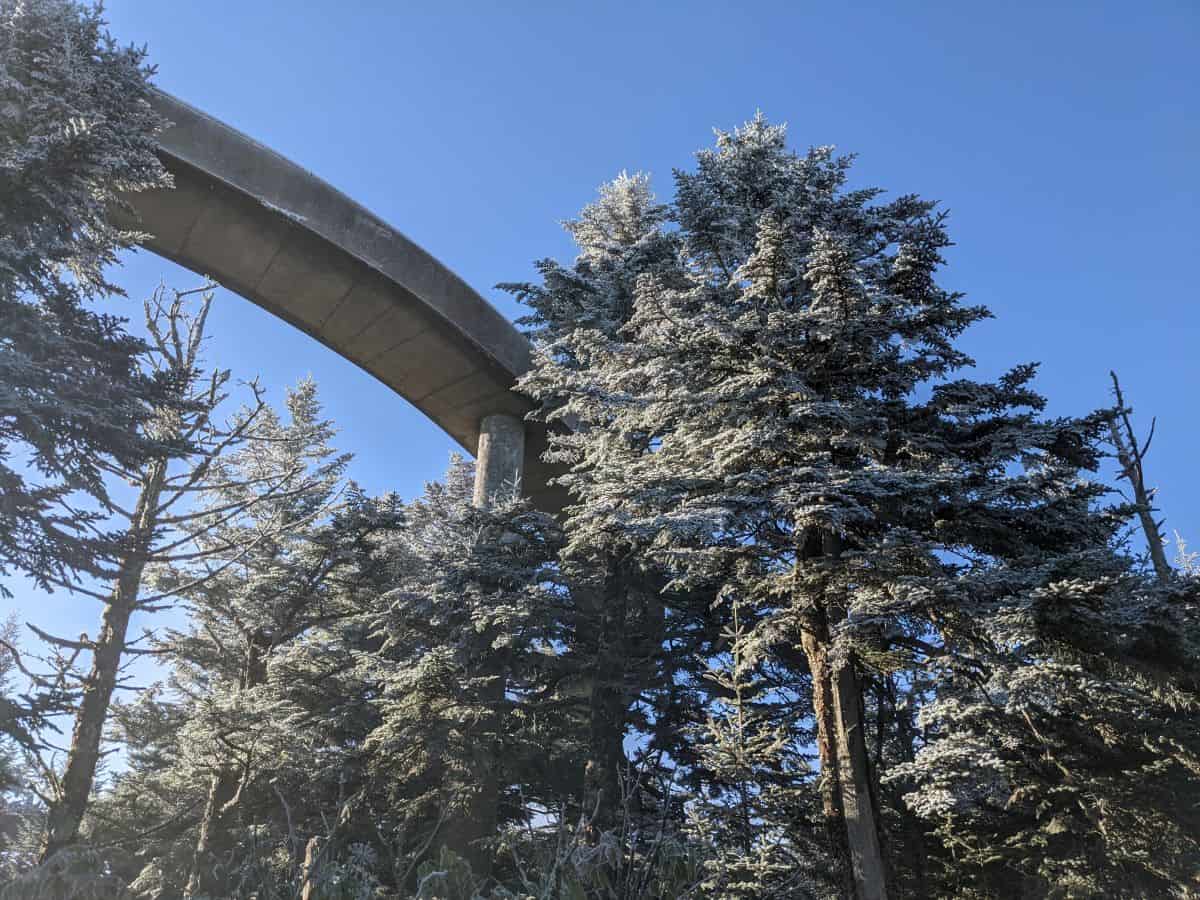
Other things to add to your Great Smoky Mountains National Park itinerary
Cataloochee Valley
The isolated Cataloochee Valley offers guests the opportunity to see the historic valley as it was. It preserves several historic buildings. There are also opportunities for wildlife viewing. Use caution when driving on the narrow roads.
More hikes in Great Smoky Mountains National Park
Great Smoky Mountains National Park is home to more than 150 official hiking trails from short, easy, kid-friendly hikes to quite long hikes requiring significant hiking experience.
Here are a few of the most popular hikes in the Park that I haven’t already touched on.
- Rainbow Falls, 5.4 miles, moderate
- Alum Cave Bluffs, 2.5 miles one way
- Abrams Falls, 5 miles roundtrip, moderate to difficult
- Grotto Falls, 3 miles roundtrip, moderate
If you’re traveling with children you might enjoy the short, easy Cataract Falls Trail. The falls are about 0.7 miles from the Sugarlands Visitor Center.
Best time to visit Great Smoky Mountains National Park
The best time of year to visit Great Smoky Mountains National Park varies depending on what you want to do.
The park is busiest from May through October, and the fall colors are at their peak in October. On average, over the last decade or so, June, July, and October have been the busiest months.
If you’re interested in hiking, the spring and autumn months are the best time to visit, as the summer months are hot and humid. Again, expect to encounter many people if you’re there in October.
If you’re looking for an amazing natural phenomenon to witness, look no further than the synchronous fireflies at Great Smoky Mountains National Park.
Every year, around the end of May or the beginning of June, this park hosts a special event in the Elkmont area where visitors have a chance to see large numbers of these fireflies light up at once.
Vehicle passes are awarded by a lottery system, so there’s, unfortunately, no guarantee that you’ll be able to see them.
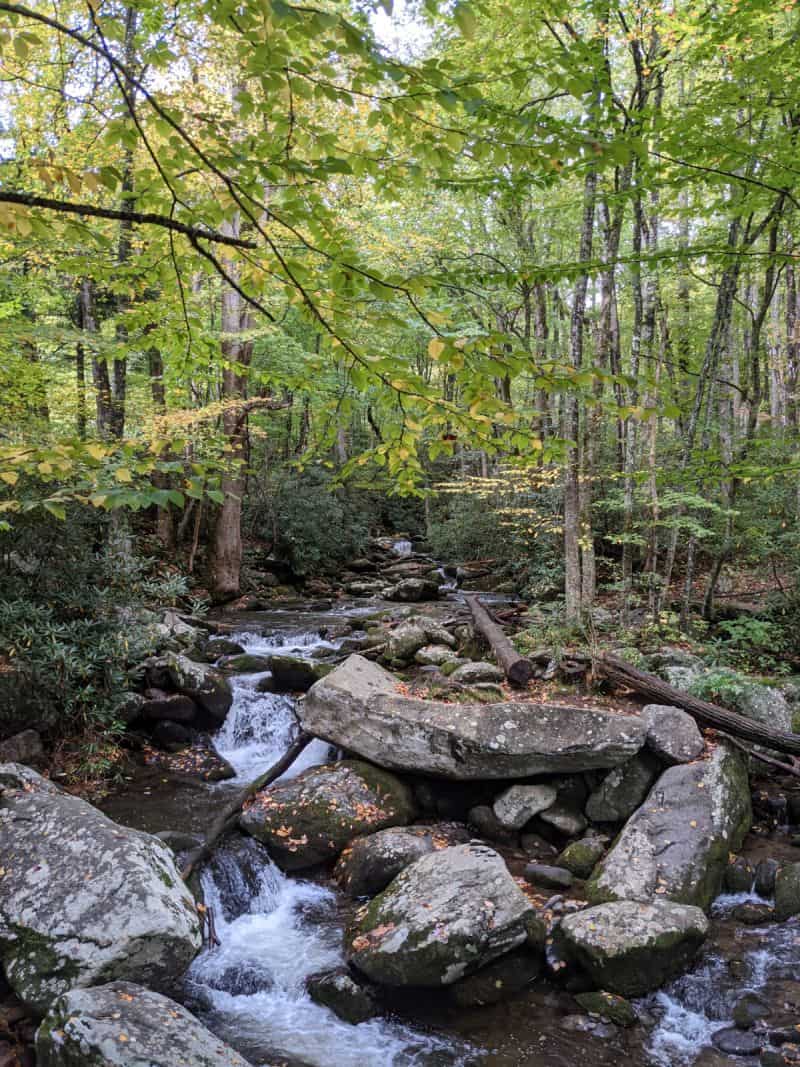
Where to stay on your trip to Great Smoky Mountains National Park
For a complete discussion of where to stay on your trip, see my article all about where to stay in the Smokies.
Campgrounds in Great Smoky Mountain National Park
Camping is a great way to experience Great Smoky Mountains National Park.
There are 10 developed frontcountry campgrounds in the park, and they offer a variety of amenities including restrooms (with cold running water and flush toilets), fire grate, and picnic tables. Most of the campgrounds are available seasonally, with a couple open all year round.
Backcountry camping, group camping, and horse camps are also available. Most of the campgrounds are also located near popular attractions, so you’ll be able to enjoy the beauty of the park while you’re camping.
Hotels near Great Smoky Mountains National Park
There are no motels or inns in Great Smoky Mountains National Park. LeConte Lodge is only accessible on foot after hiking at least 5 miles.
If you prefer to stay in hotels, your only option will be to stay in one of the gateway towns at the major entrances to the Park.
Gatlinburg, Tennessee
You’ll have the most hotel options if you stay in Gatlinburg, Tennessee. It’s located just outside the park, and it also offers a variety of restaurants, shops, and other attractions.
Here are a few highly rated hotel options in Gatlinburg:
The Park Vista offers beautiful views of the Smoky Mountains, and every room comes with a balcony.
Margaritaville Resort is cram-packed with amenities and just a short drive to Great Smoky Mountains National Park.
Fairfield Inn and Suites is a favorite affordable hotel brand for me and Hubby. Their downtown Gatlinburg location is very close to the start of the Roaring Fork Motor Nature Trail (see below).
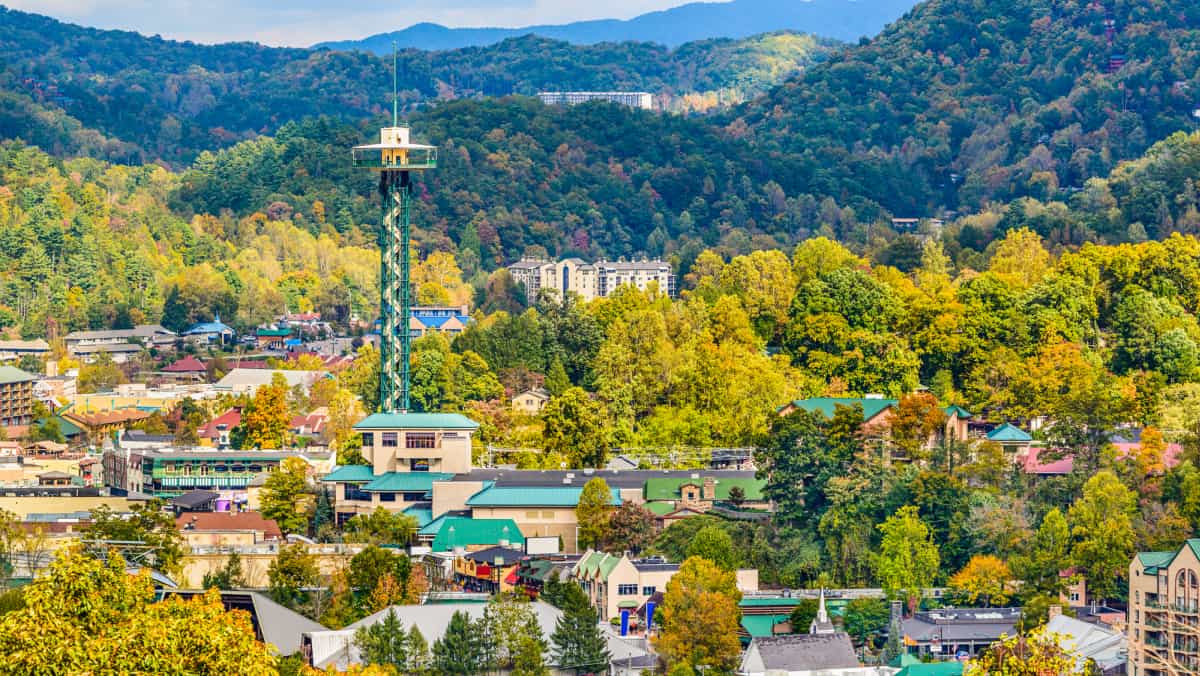
Cherokee, North Carolina
Cherokee is another great option as it’s very near the Park and the Oconaluftee Visitor Center.
Major attractions in Cherokee, aside from the Park, are Harrah’s Cherokee Casino, the Museum of the Cherokee People, and the Blue Ridge Parkway. Cherokee is the southern terminus of that famous scenic route.
Cherokee lodging options include:
- Stonebrook Lodge: We enjoyed our stay here, just minutes from Great Smoky Mountains National Park. Offers free parking and comfortable rooms but a subpar continental breakfast. We opted to grab a wonderful breakfast at Peter’s Pancakes and Waffles in town.
- Great Smokies Inn: Just minutes from the Oconaluftee Visitor Center and the southern end of the Blue Ridge Parkway.
Townsend, Tennessee
Townsend, Tennessee, is located on the “quiet side” of Great Smoky Mountains National Park. It also has the benefit of being the closest town to the popular Cades Cove scenic drive (more on that below).
Highland Manor Inn is just four minutes from the west entrance to Great Smoky Mountains National Park. Guests love how close the property is to the Park.
Other hotel options for staying near Great Smoky Mountains National Park
Further from the park, but also popular are Pigeon Forge and Sevierville, Tennessee. Pigeon Forge includes a lot of tourist attractions.
Guests love the Residence Inn Pigeon Forge for its location and spacious rooms.
Those who prefer to avoid major hotel chains may like The Inn on the River. Guests enjoy the service and location. It’s about 13 miles from the Sugarlands Visitor Center and about a 10-minute drive from Dollywood.
Sevierville is located about 17 miles from the Sugarlands Visitor Center (inside the Gatlinburg entrance). You would need to plan on a 35 – 40 minute drive to be inside the park from Sevierville…potentially longer if the Gatlinburg traffic is really congested.
When is it not, right?
To really save money during peak fall colors time, when hotel rates were higher than we wanted to spend, we chose to stay at the Fairfield Inn & Suites Knoxville Airport Alcoa.
We had a fine stay. And while it was nice to save $100/night on the hotel room, we ended up doing A LOT more driving than I think I would want to do on a return visit to the Park.
Great Smoky Mountains National Park entrances
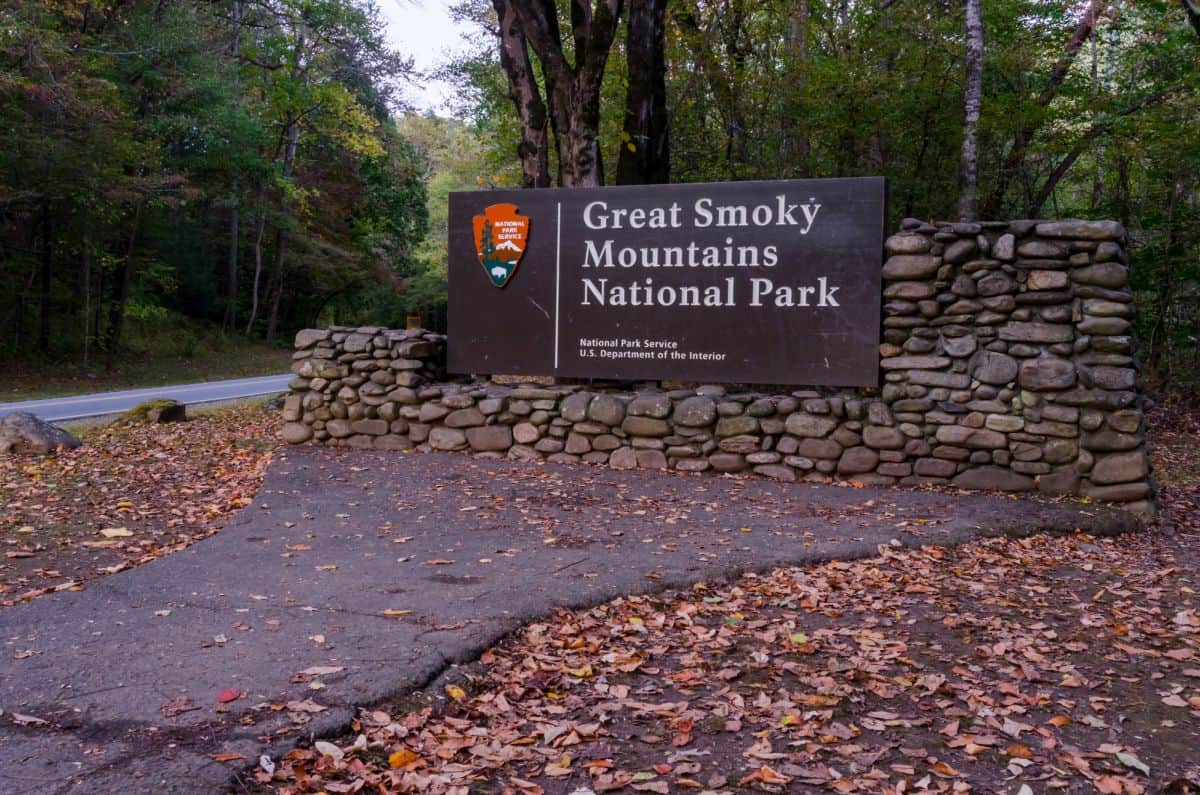
There are several entrances to the Great Smoky Mountains National Park, and each offers its own unique experience.
The most popular entrance is located in Gatlinburg. The entrance is the closest to popular Gatlinburg attractions, and it’s also where you’ll find the greatest concentration of hotels and restaurants.
One downside is that this entrance is also quite popular and can get VERY congested during peak travel times. Those staying in Gatlinburg always seem to want to enter and leave the Park at about the same time.
We live in Upstate South Carolina and use the Cherokee, North Carolina, entrance. From there you can follow the beautiful scenic drive along Newfound Gap Road through the Park. It’s also a great option if you’re looking to avoid the crowds at the Gatlinburg entrance.
Finally, for an even less crowded entrance into the park Townsend, Tennessee, is the entrance you’re looking for. It also has the benefit of being the entrance closest to the popular Cades Cove scenic loop.
Great Smoky Mountains National Park Visitor Centers
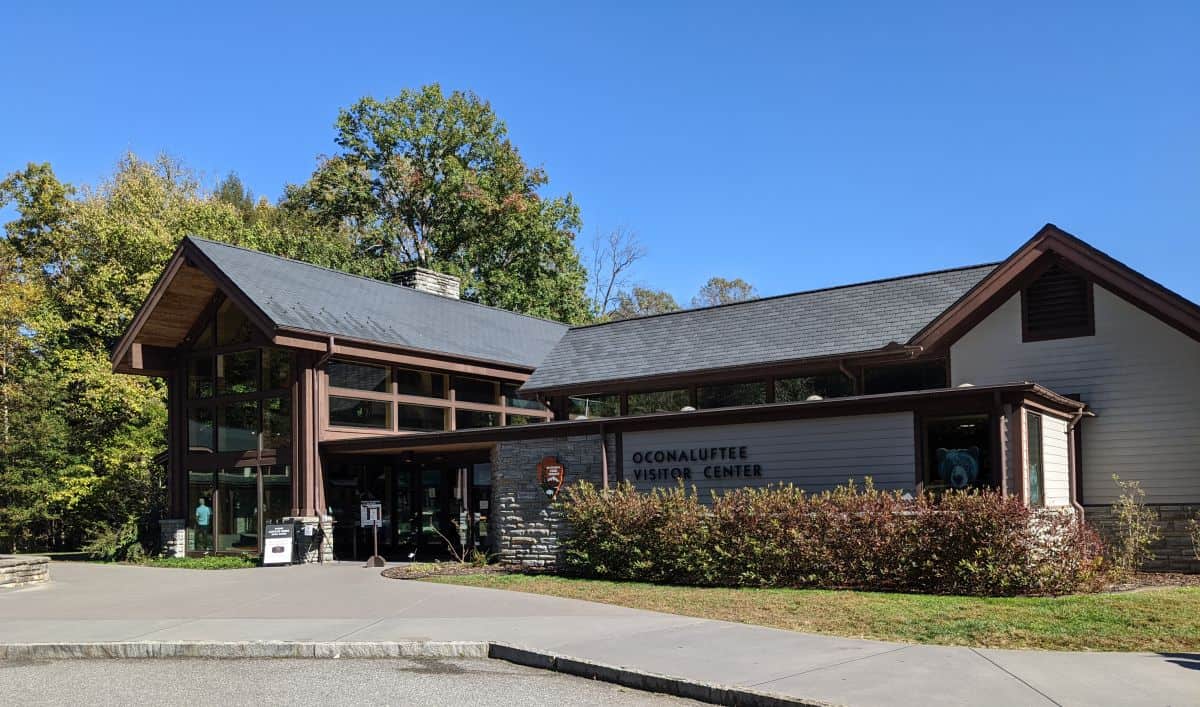
There are three visitor centers in Great Smoky Mountains National Park as well as a small “contact station” at Clingmans Dome.
We always make it a point to stop at a Visitor Center for any National Park trip. You’ll want a park map at least. Plus there are restrooms, gift shops, and you can talk to a park ranger if you have any questions.
The Sugarlands Visitor Center is the most popular in the park. It’s located near the Gatlinburg, Tennessee, entrance.
The Sugarlands Visitor Center also offers a variety of ranger-led programs, so it’s a great place to learn about the park. The Backcountry Permit Office is also at the Sugarlands Visitor Center.
The Oconaluftee Visitor Center is closest to the Cherokee, North Carolina, entrance. Like the Sugarlands Visitor Center, here you can find a gift shop, helpful National Park Service staff, maps, restrooms, and more.
The third Visitor Center is on the Cades Cove Scenic Loop. This center is much smaller than the other two, but you’ll still find a gift shop, restrooms, etc. There are also several historic buildings nearby that you can explore including a grist mill.
Picnic areas in Great Smoky Mountains National Park
Great Smoky Mountains National Park is a great place to enjoy a meal outdoors, and it offers a variety of great picnic areas to choose from.
The picnic areas are:
- Big Creek
- Chimneys
- Cades Cove
- Collins Creek
- Cosby
- Deep Creek
- Greenbrier
- Heintooga
- Look Rock
- Metcalf Bottoms
- Twin Creeks
Some picnic areas are open seasonally and some offer pavilions that can be reserved for groups.
If you’re having a hard time choosing where to enjoy your picnic, I’d suggest you check out Chimneys. It’s located on the West Prong Little Pigeon River and several of the picnic sites are right on the river. Guests are welcome to enjoy the cool water of the river on hot days.
Cades Cove is also a popular picnic spot. You’ll find it near the entrance/exit to the scenic loop.
What to take with you on your Smoky Mountains hike
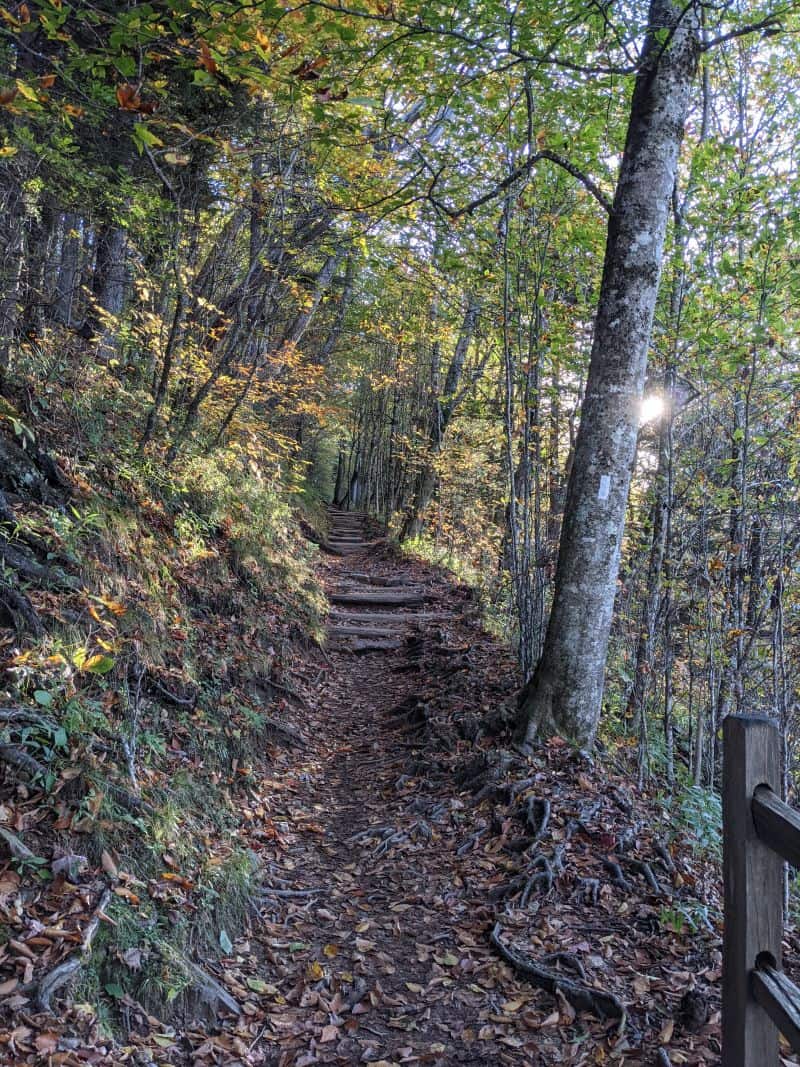
Hiking is a lot more fun when you’re prepared with the right shoes and clothing. The correct outfit can increase your comfort and make the whole hike much better.
It’s best to dress in layers while hiking so you can peel off or put on clothes as the temperature changes. Make sure you pack weather-appropriate outerwear and plenty of snacks and water.
My hiking favorites
Hiking shoes—I prefer to wear waterproof hiking shoes over hiking boots. Trail running shoes can also be a good option depending on the hike if that’s your preference.
I love my waterproof Keen hiking shoes. You can check the price on Amazon here.
Waterproof shell—The weather can change rapidly, so it’s important to make sure you carry with you some protection from the elements…even if the forecast is for a lovely and dry day.
I love my Columbia Arcadia II jacket. You can check out the price on Amazon here.
Trail pants—I love my Columbia Saturday Trail Pants. They’re really lightweight and comfortable. You can check them out on Amazon here.
Tips for visiting Great Smoky Mountains National Park
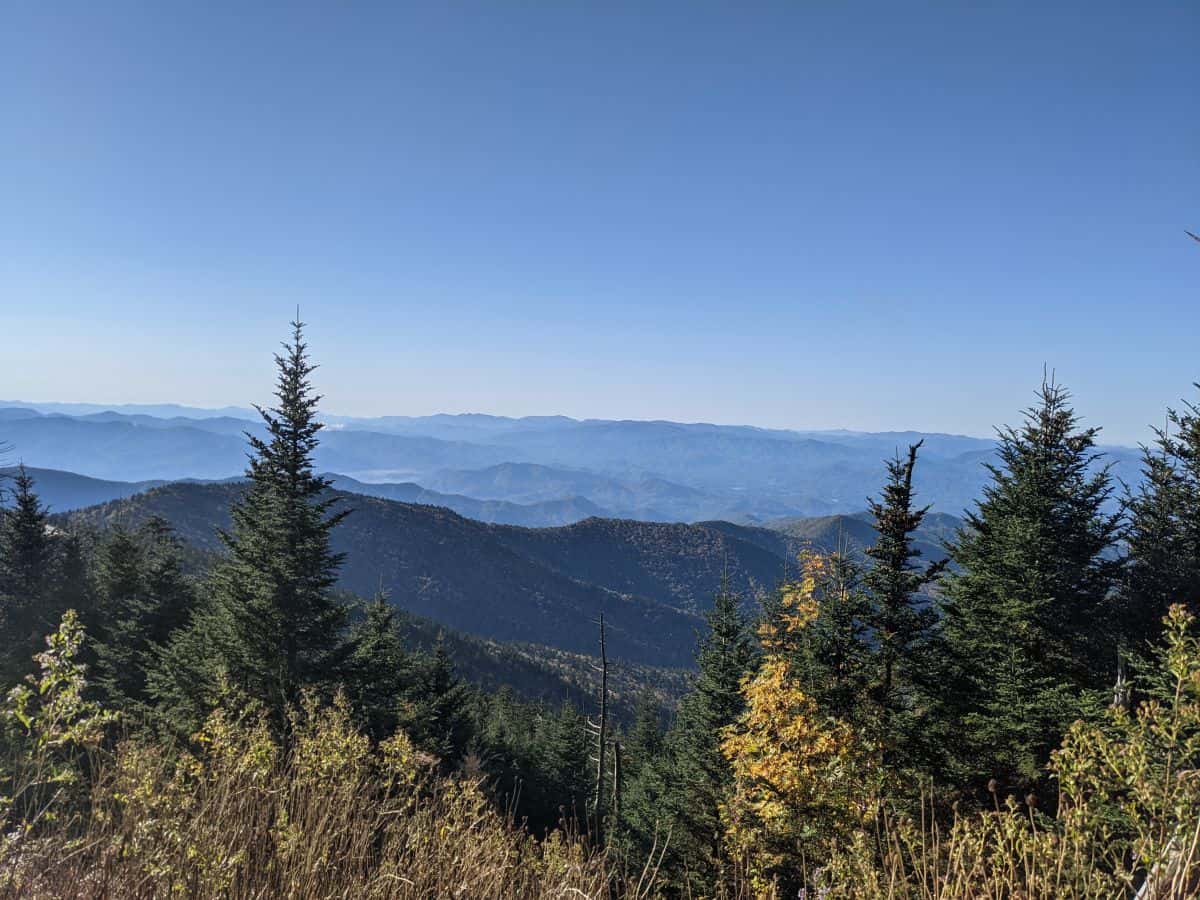
When visiting any national park, it’s important to be aware of the rules and regulations in place. Great Smoky Mountains National Park is no exception.
Some important things to keep in mind when visiting the Smokies:
1. Pets are prohibited on nearly all trails in the park.
2. Be sure to leave no trace. If there are no garbage cans around, pack out whatever you bring in with you.
4. Stay on the trails while hiking and don’t take any shortcuts. This helps protect the natural resources in the park and protects your safety.
5. Obey all speed limits and traffic laws while driving in the park. This helps keep everyone safe and ensures that visitors have a pleasant experience.
6. Come prepared for all types of weather, as conditions can change rapidly in the Smoky Mountains.
Final thoughts on your Smoky Mountains itinerary
If you’re looking for a great hiking destination with some beautiful scenery, Great Smoky Mountains National Park is definitely worth checking out.
With plenty of trails to choose from, there’s something for everyone – whether you’re a beginner or an experienced hiker.
And if you’re looking for some beautiful scenery, be sure to visit Cades Cove, Roaring Fork Motor Trail, Newfound Gap, and Clingmans Dome.
More articles about National Parks
- Inspiring books about U.S. National Parks
- The best National Parks in the Southern United States
- The top National Parks on the East Coast
- The best national parks gifts (for any budget)
- Hiking Congaree National Park
Pin this post!
